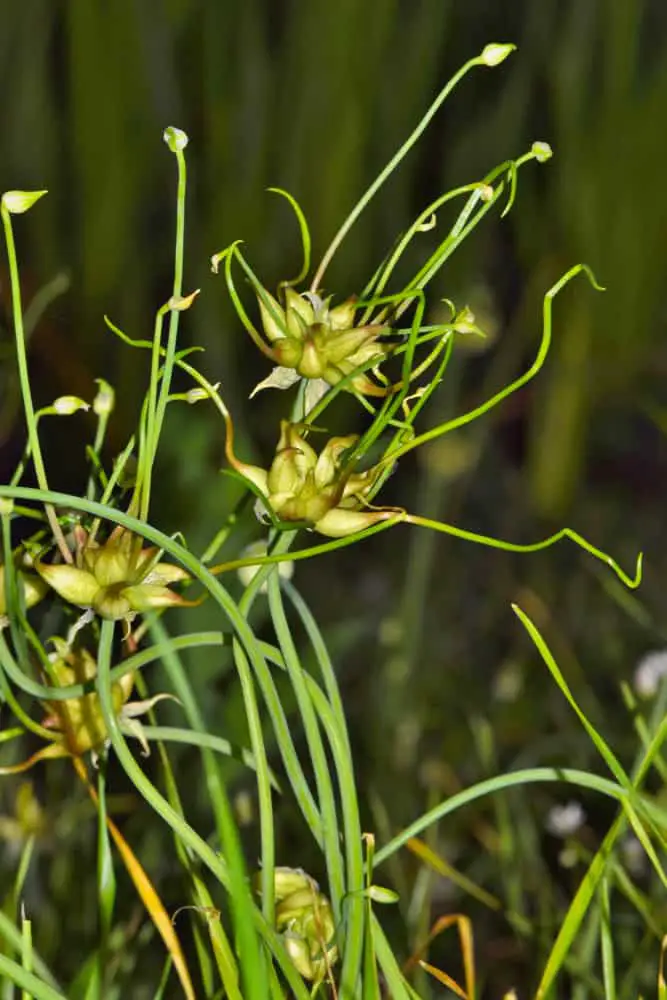Wild onion plants look like u-shaped grass, with white flowers blossoming in the spring. They look nothing like domestic onions but can be similar to domestic green onions. Many people believe they are seeing wild onions when they’re actually seeing one of many other closely related wild plants. Wild onion plants have a lot of lookalikes out there. Moreover, many people are comfortable enough using the term “wild onion” to cover wild garlic plants, wild leeks, and more. Identifying wild onions correctly takes a little bit of time and practice.
For the true outdoor enthusiast, it can be more fun to take a closer look and really know the difference between these species of wild onion, garlic, leeks, and their more dangerous lookalikes out there (like death camas). Let’s break down how you can know what you’re seeing.
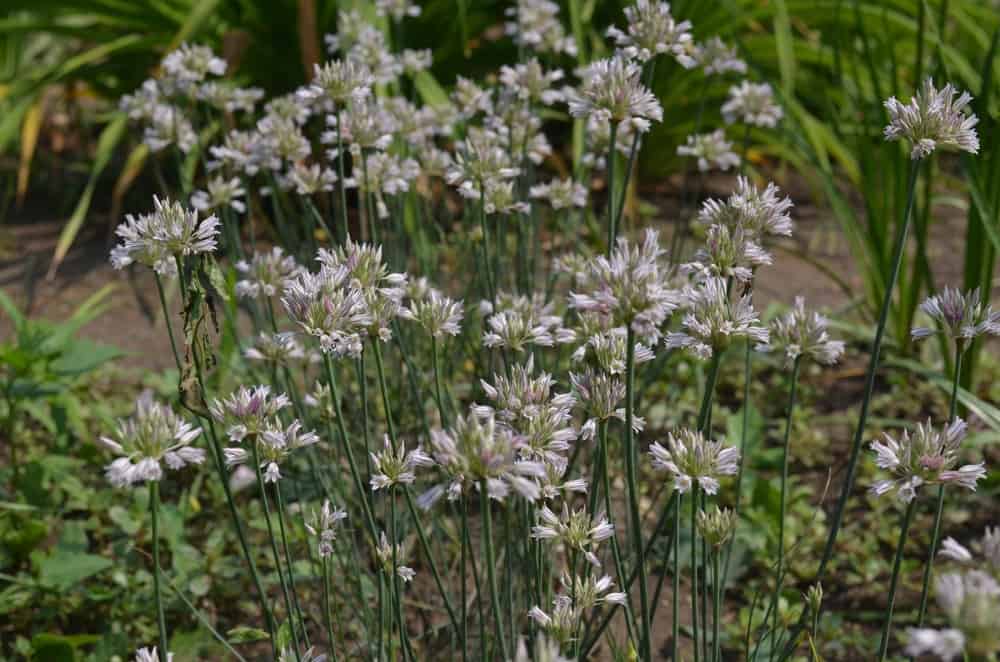
What Do Wild Onions Look Like?
Wild onions don’t look much like the domestic onions you purchase in the grocery store. They look more similar to domestic green onions. Both have bulbs at the end with what appear to be long blades of green grass for the tops.
Wild onion has long green leaves with a gentle u-shape. The ends are pointed like a triangle. The leaf feels like a succulent. The green color has a slight blue tint. When pulled up with the root intact, the underground bulbs are bright pink. It may be small and round, or sometimes the bulb is stretched out long and looks more like a stem.
When the flowers are in bloom, wild onions have small white flowers with six petals. Sometimes these hang low off the plant, while others are in a cluster on top of the green stem. Wild onion flowers bloom in late spring and can typically be seen from April through June.
The most distinctive feature of the wild onion isn’t how it looks, but its smell. The best way to identify wild onion is to get up close and use your nose. Give the bulb a sniff, and if you’re not sensing anything, try crushing the bulb between your fingers and then smelling it. If there is that distinct onion-garlic smell that most people know from their kitchens, then you likely have wild onion or garlic. If not, then you may have one of the poisonous lookalikes. If you’re ever in doubt at all, do not eat any wild plant.
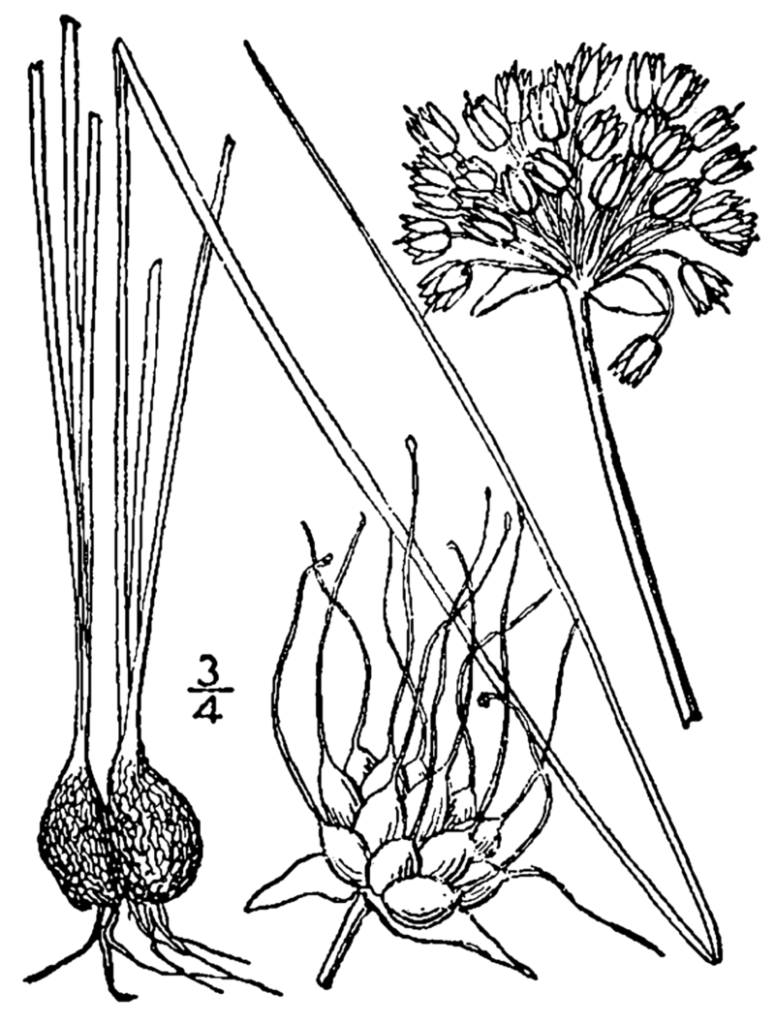
Wild Onions By Any Other Name
Sometimes, it doesn’t matter all that much that wild onion plants are confused with other plants. Confusing onion grass with wild garlic or wild chives isn’t going to have terrible consequences. All of those plants are edible. However, there are wild onion lookalikes that are toxic, so accidentally eating them could have terrible repercussions. It’s a good idea to get familiar with the lookalikes as you move forward.
Wild onions grow from small bulbs, like many of the plants they’re often confused with. They are in the genus Allium, which also includes onions, leeks, garlic, and chives. Some of the wild alliums plants you may run into that people simply refer to as “wild onions” include onion grass (Allium vineale), wild garlic (Allium canadense), wild chives (Allium schoenoprasum), wild leeks (aka ramps) (Allium tricoccum), and spring onion.
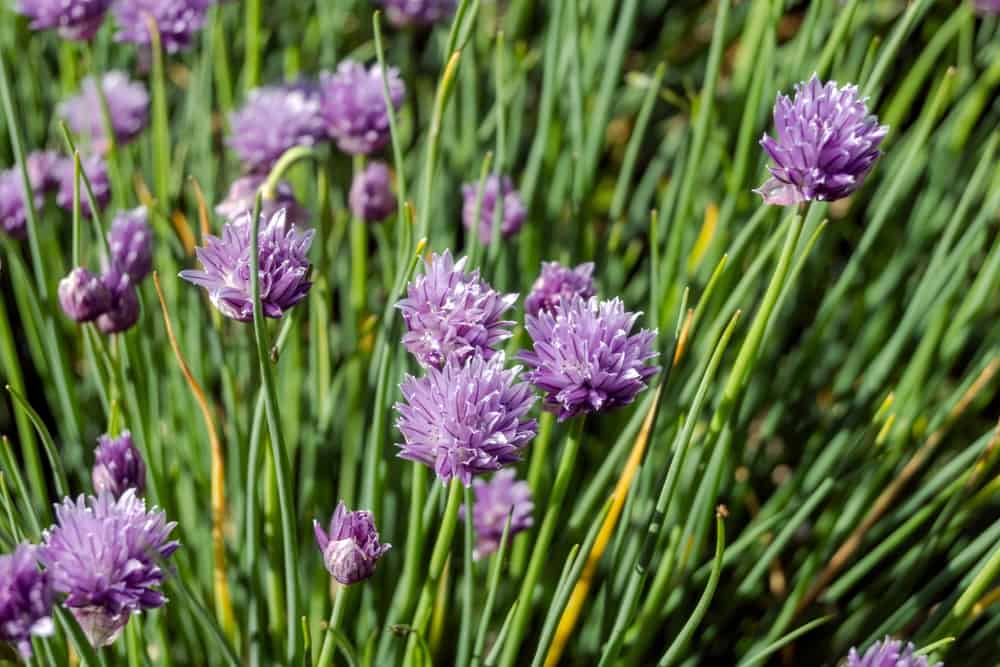
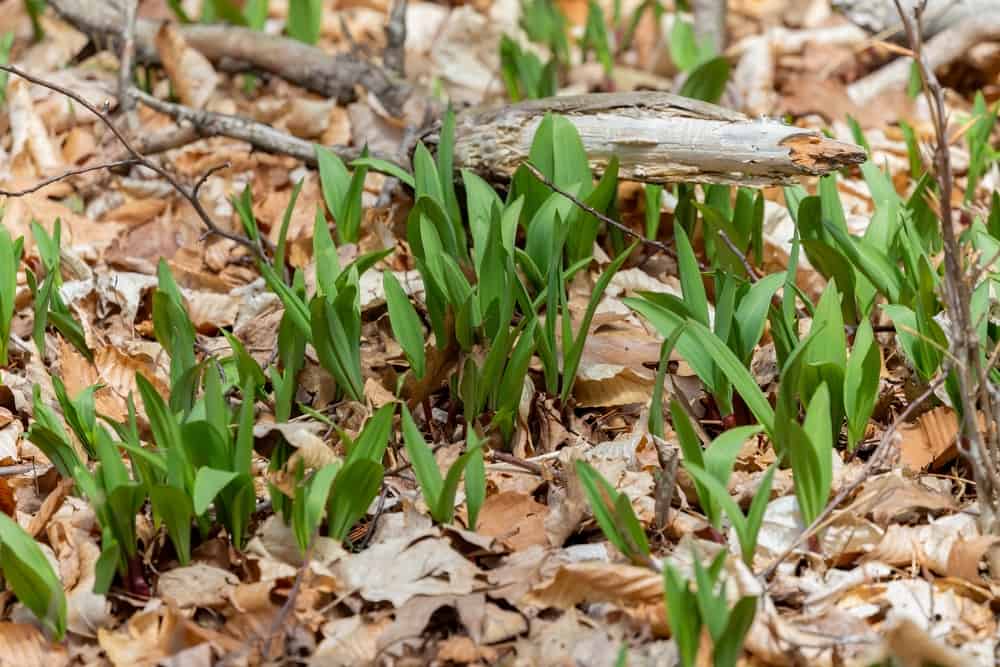
Meadow garlic is one of the most common plants you may confuse wild onion with. If the plant is flowering, this will be easier. White flowers are wild onion, and pale purple flowers are usually wild garlic. The other indicator here is their green tops. As mentioned above, wild onion has a gentle u-shape in the leaves. The plant may feel more like a succulent when you rub the leaf between your fingers. With wild garlic, the leaf is more hollow and feels like a tube.
While sniffing the plant is the best way to know if it’s wild onion and not a dangerous lookalike, it can be a little difficult for some people to tell the smell of wild onion and garlic apart.
So, what about the more dangerous plants you may confuse wild onion with? If you have any intention of eating wild plants, you will want to learn which lookalike plants are toxic. This is sometimes more important than learning how to identify the one you’re looking for. This is because you may easily see the traits of the plant you’re looking for, and miss the ones that mark it as something else. This is especially true with wild onion.

One of the most common poisonous plants to look out for is death camas. This wild plant is in the lily family, like wild onion. The leaf on the death camas is thinner and more like grass than the succulent-like feel of the wild onion. The wild onion leaf has a gentle u-shape, but the death camas is a hard v-shape. The v-shape makes it easy to fold the leaf in half and create a firm fold. This is difficult to do with wild onion leaves because the crease is a more gentle and springy shape. When pulled from the ground, death camas bulbs are also pink but a softer shade of pink than wild onion. Picking both plants and comparing them is one of the best ways to see this difference.
The biggest difference between death camas and wild onion is the smell. A wild onion will have an onion-like odor, especially when you crush the bulb between your fingers. It is not recommended that you eat a death camas because the plant is toxic. However, if you were to bite into one, the taste would also be unpleasant and a marker that you don’t have a wild onion in your mouth.
How To Harvest Wild Onion Plants
When foraging for wild onions, you need to be mindful of all parts of the plant. The small bulb is edible and an important part of what you’re trying to harvest. If you simply grab the green tops and pull on the plant as you would for a weed, you will likely lose the bulb. The bulbs are sometimes just below the surface and sometimes a few inches deep. The most effective way to uproot the bulb is to use a spade or a small shovel to gently dig up the plant. Shake off the dirt, and you will have a wild onion in hand.
If you are foraging in someone’s yard, you need to make sure that the ground hasn’t been fertilized or exposed to weed killers. These toxic chemicals will seep into the wild onion and be dangerous to eat.
Eating Wild Onion
The entire plant is edible, including the leaves, bulb, and flower. You can roast them in the oven, boil them, or eat them raw. A lot of people just stick to eating these raw on the trail. They’re also great chopped up and sprinkled over a salad or as a garnish on a soup. If you would use domestic onions, pearl onions, garlic, leeks, or chives in your recipe, you could likely replace them with edible wild onion plants that you have correctly identified. While wild onions have a unique flavor, it is still that oniony-garlicky flavor that these more common plants provide to any dish.
Note that if you were in a survival situation, it would be better to find a way to heat wild onions up before eating them. When heated, wild onions release more carbs and have a higher calorie count than when they are raw.
Is Onion Grass Actually Just A Weed?
Yes, onion grass is an invasive weed, though it’s an edible one that many people like. The grass itself doesn’t look bad, so some people enjoy growing it in their yards. However, many gardeners do not want to see these perennial weeds popping up in their flower beds. This is part of why it’s so important to make sure that the onion grass you’re harvesting hasn’t been treated with weed killer. There are definitely gardeners who want to keep this noxious weed out of their yards.
Interesting Fact: Indigenous People Used Wild Onion As Medicine
It is interesting to note that wild onions were used extensively by the indigenous people. They would gather them in from spring to late fall and eat them fresh or add them to stews or meat dishes. A few of the tribes would use the wild onion to draw the poison out of a snake bite or apply crushed wild onion to insect bites to reduce swelling. A syrup was also made from the onion and used as a cough suppressant. See
Enjoying Wild Onion Plants
Whether you’re looking for wild onions as an edible treat for your kitchen, or just enjoy identifying plants on the trail, there are plenty out in nature to see. The underground bulbs grow throughout the winter and early spring. In late spring, often around April, aerial bulblets are formed, and the green tops become more apart. April through June is typically the best time to go searching for wild onion plants, which can often be found growing in groupings, making them fun to harvest. In the early summer, they start dying again, though their bulbs will remain in the soil and prepare to grow back again for the next few years. This means that if you’ve found wild onions in a field one year, you can always go back the next to try again.
Recent Posts
The only venomous snakes in Washington State are Northern Pacific Rattlesnakes. The Northern Pacific Rattlesnake (Crotalus oreganus oreganus) is a sub-species of the Western Rattlesnake. Anyone...
Skunks are not classified as true hibernators. But they go into a state of torpor when the weather gets cold. Skunks are light sleep hibernators, along with opossums, bears, and raccoons. ...

